The Corsair Carbide 400Q Case Review
by E. Fylladitakis on April 29, 2016 9:00 AM EST- Posted in
- Cases/Cooling/PSUs
- Corsair
- ATX
- E-ATX
- Carbide
The Exterior of the Corsair Carbide 400Q
Corsair went with a minimalistic refined design with the Carbide 400Q. The entirety of the case, both inside and outside, is satin black. It is worthwhile to mention that the external paint job is immaculate and that the paint is highly resistant to fingerprint marks. All of the case’s panels are flat and metallic, including the faceplate - the top of which is the only part of the case that is making a rounded edge. Measuring 46.4 cm tall, 21.5 cm wide and 42.5 cm deep (18.3 × 8.45 × 16.75 in), the Carbide 400Q is a rather compact midi ATX tower case like Corsair claims it is, falling between the SilverStone Fortress FT05 (7.5% larger) and the NZXT S340 (9.5% smaller). While NZXT managed to make their case nearly 10% more compact, we should note that the Carbide 400Q supports more parts and larger hardware parts, such as EATX motherboards.
11.2 oz (330ml) can inserted as size reference
The front faceplate cannot be opened, as there are no external drive bays anyway. Its frame is actually plastic, with the metallic plate being just a top cover for aesthetic purposes, and can be removed to clean the front filters and to allow access for the mounting of liquid cooling radiators. Corsair says that it can be simply pulled off, but that was not true for our sample: it required a lot of force to come off and that does not bode well for the longevity of the plastic mounting studs.
The front I/O ports and buttons are at the top panel, near the front side of the case. Starting from left to right, we can see a small reset button, an activity LED, two 3.5mm headphone jacks, two USB 3.0 ports and one large square power button.
A look at the rear of the Carbide 400Q reveals that the PSU compartment is located at the bottom, a common design feature as of late. We can also see the 120 mm fan, the position of which can be adjusted vertically by about one inch. There are no holes for cables or liquid cooling hoses.
One of the most interesting parts of the Carbide 400Q is the top panel, which features a magnetic cover with a narrow layer of sound dampening material. The case comes without any fans from the factory but, should the user wishes to trade acoustics with thermal performance, the top cover can be simply pulled off to reveal the perforated top of the case.
The Carbide 400Q stands on four rather tall plastic feet with rubber anti-slip pads at their bottoms. The feet are particularly tall for a case that has limited underside ventilation (only for the PSU). Although the feet can be removed, the 400Q is designed to function with the feet attached - the PSU intake will be blocked and the furniture will be exposed to many rigid objects that can cause damage. The PSU intake has a nylon filter that can be removed from the back of the case.


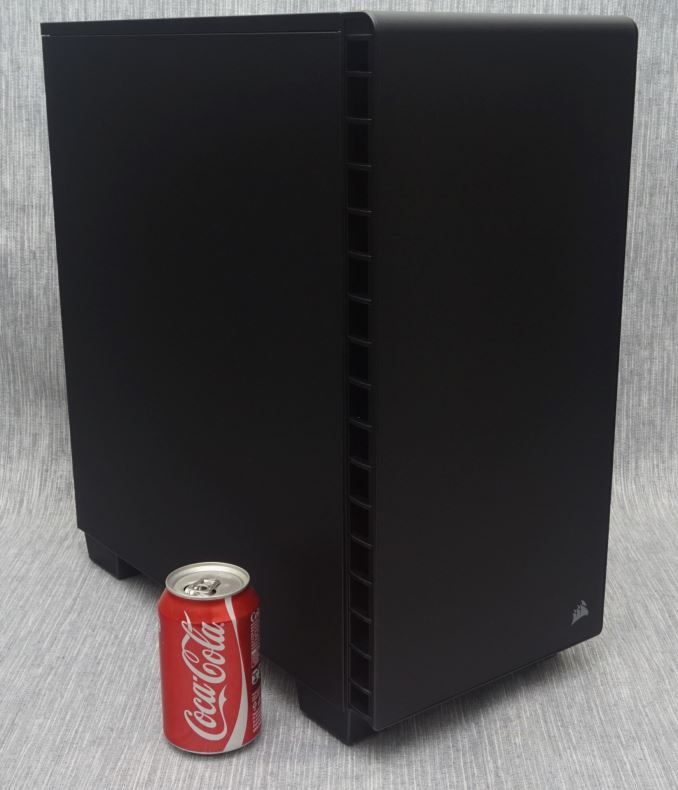
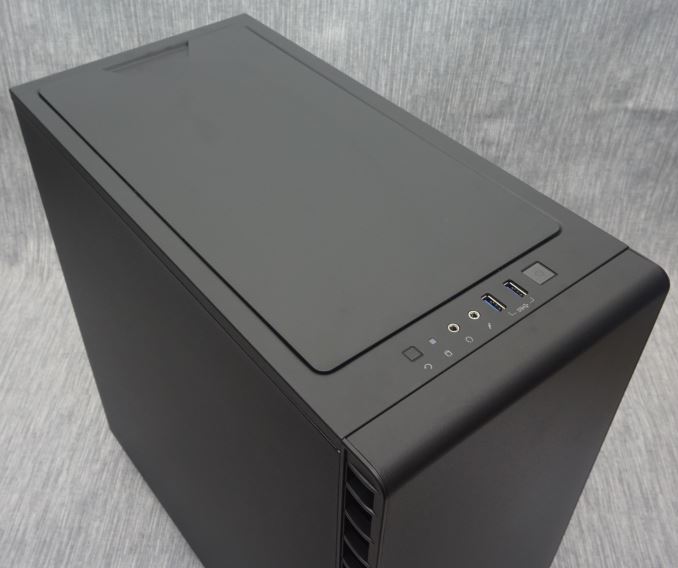
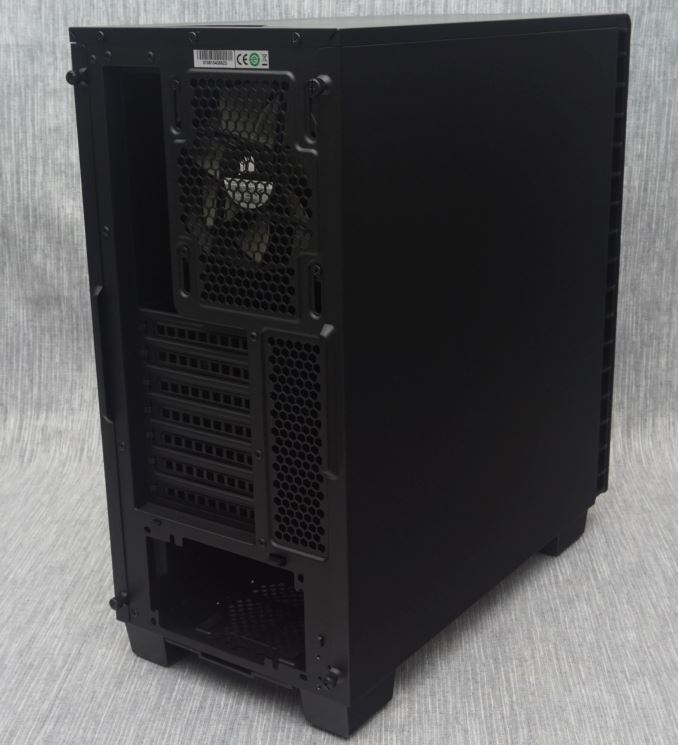
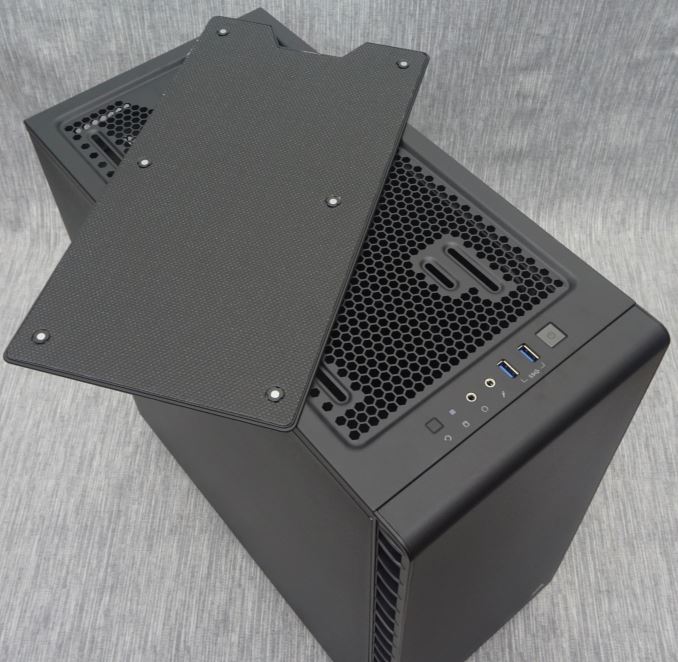
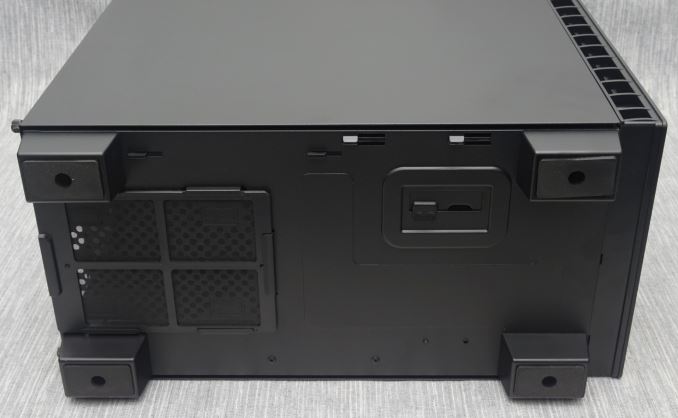








63 Comments
View All Comments
vanilla_gorilla - Friday, April 29, 2016 - link
" It is the balance between them that matters and we feel that Corsair did a fine job balancing their design to the best possible extend."Extend? You mean extent? Even that seems poorly worded. Editors asleep over there?
vanilla_gorilla - Friday, April 29, 2016 - link
" It is next to impossible to bent or twist the chassis, even if a lot of force is applied. "You mean bend?
retrospooty - Sunday, May 1, 2016 - link
Seriously, the world doesn't need another grammar Nazi. This is the internet not an official textbookrandom2 - Wednesday, May 11, 2016 - link
This is a journalistic article, by a paid contributor or editor, available for the world to view and is at least a semi permanent record so there is a certain level of professionalism expected. Proofing these articles before posting is not difficult or even that time consuming. Not proofing is just asking to be entered in a race to the bottom...speaking from a journalistic point of view.economymatthew - Friday, April 29, 2016 - link
A pretty b itchy response to a free product reviewjardows2 - Friday, April 29, 2016 - link
Apparently you haven't been reading the comments section of AnandTech articles for long. Always someone quick to point out typos and grammatical errors!Samus - Friday, April 29, 2016 - link
Ignore the trolls. Odds are this site is older than they are.Valantar - Saturday, April 30, 2016 - link
Age is a poor differentiator when it comes to whether or not to ignore trolls. Fully grown trolls are just as undeserving of our attention as those still in their larval stages.More to the point: sure, pointing out typos and other error in a long article can be helpful (there's a reason why proof reading used to be a profession!), but as with everyone else on the internet, we could do with an extra dose of humility and politeness.
random2 - Tuesday, May 10, 2016 - link
Younger trolls care not about grammar.boozed - Friday, April 29, 2016 - link
Occasionally the pedantic nonsense is necessary, such as when an error stems from a fundamental misunderstanding of the meaning of words.Pointing out typos is tedious however. How hard can it be to implement a "send correction" form? Plenty of sites have them and it gives people somewhere to put their pedantic nonsense without drowning out the main comments.